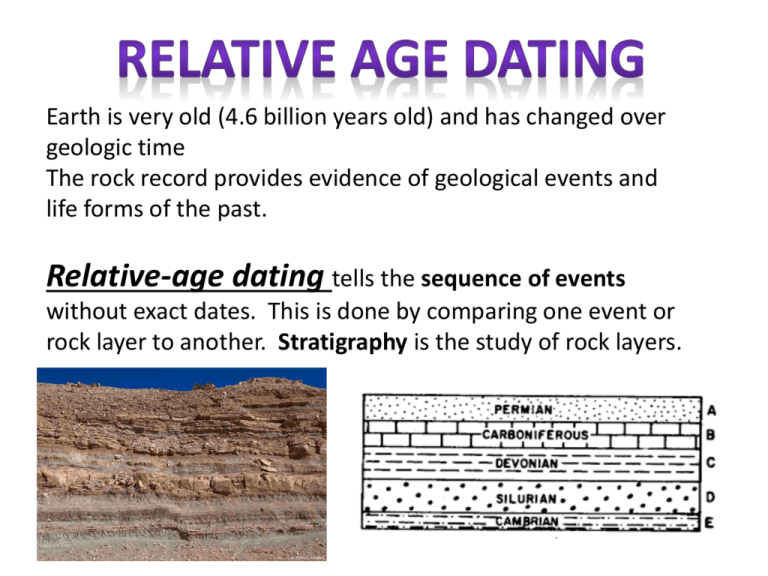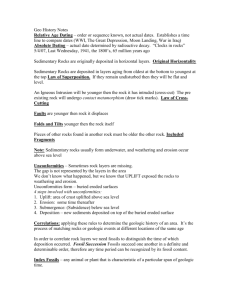Relative Age Dating: Stratigraphy & Unconformities
advertisement

Earth is very old (4.6 billion years old) and has changed over geologic time The rock record provides evidence of geological events and life forms of the past. Relative-age dating tells the sequence of events without exact dates. This is done by comparing one event or rock layer to another. Stratigraphy is the study of rock layers. States that in an undisturbed rock sequence, the oldest rocks are at the bottom and as you travel up the rock sequence the layers get younger States that layers of sedimentary rocks are always laid down horizontally (flat) Tectonic forces (mountain building, uplifting, erosion) may tilt or bend them in the future States that anything cutting across a rock layer is younger. The rock layer has to be there first. Fault: fracture or break in the rock that results in a mass movement Sometimes deposition is interrupted by erosion events called unconformities. • depositional ends • erosion removes previously formed rocks • deposition resumes Therefore missing rock layers show missing time Usually shown on rock sequence maps by drawing a wavy line The 3 types of unconformities: 1. Angular 2. Disconformity 3. Nonconformity Angular unconformity : on the bottom are tilted eroded sedimentary layers with horizontal sedimentary layers on top horizontal sedimentary layers are interrupted by erosion then more horizontal sedimentary layers are on top This is a “gap” in the rock record. There is a period of time missing due to either an erosion even or nondeposition of rock for a period of time. igneous or metamorphic rocks on the bottom with sedimentary rocks on top This occurs when you are missing time because of an igneous or metamorphic event. To relative age date, you will place the following layers of rock in sequence from oldest to youngest.





